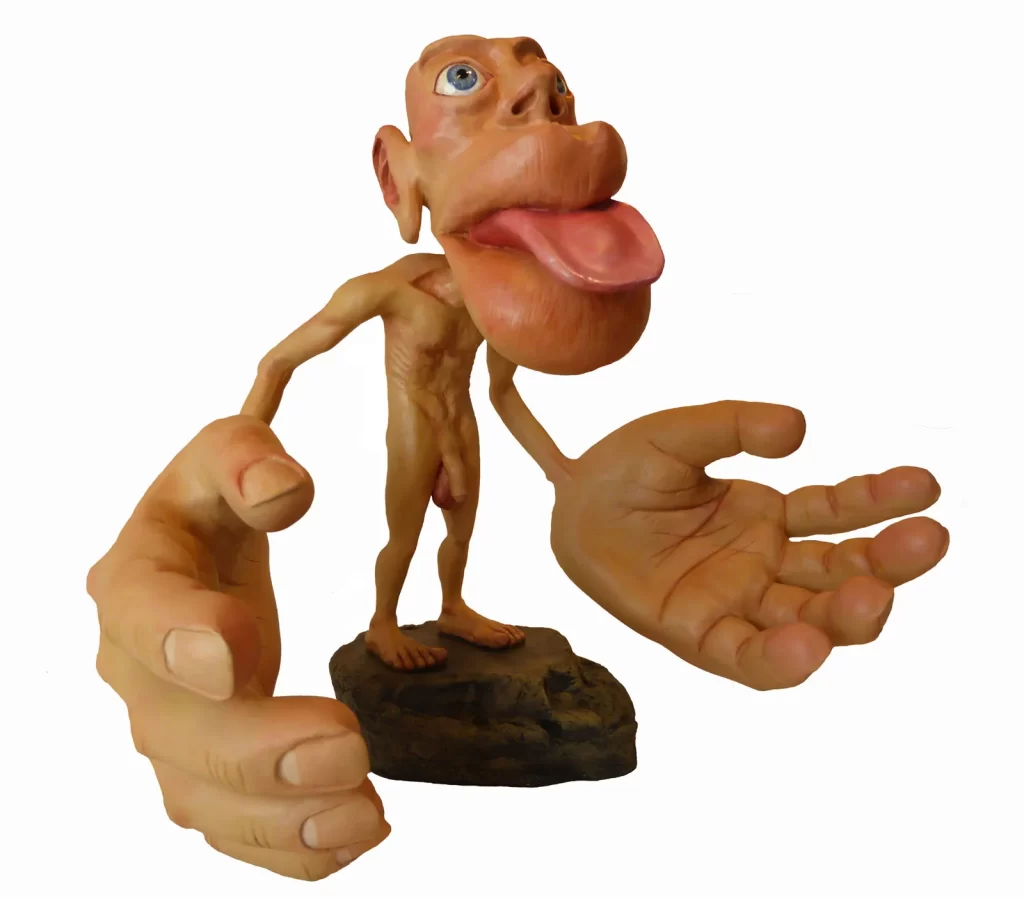It has been many years (measured in decades) since I first became aware of the concept of ‘Homunculus’. The concept of Homunculus apparently was first documented in the late 1400s. The rough Latin translation is, ‘Little Person’. From a quick bit of reading, one can learn that Homunculus were historically thought of as an artificial (alchemist) creation as well as what constituted sperm.
I actually learned about it first as the latter day concept of the distorted-looking image of a person in which the he body’s parts are enlarged to reflect the relative size of the areas of the brain.

Male version a sensory cortical homunculus.
As I was doing some quick searches to write this post I learned of some counter-arguments to the models. One article I read stated that, ‘the models oversimplify how the body’s sensorimotor signals are actually processed in the brain’. – Interesting and worth reading but outside the scope of what I’m writing today.
Rather: last night I was laying in bed thinking about the Homunculus and the models I’d seen so many years ago. I can’t argue about the scientific merits of the models but from an experiential perspective: they generally seem realistic to me. – Which is to say that from a purely touch sensory perspective: my tongue, lips, hands, etc. ‘feel’ (or seem) larger than say, my legs or torso.
This got me to think: what is the experience of a person who has been blind from birth? – A person who doesn’t have visuals to give proportions outside of what they feel. It made me wonder if they have a mental picture of themselves and their fellow humans that is close to that of a Homunculus model.
In the end, I concluded that the mental model of a Homunculus (that I presume most of us feel), would probably quickly adapt upon touching (ahem) one’s own body. (Or the bodies of others.)
Still: I was briefly intrigued by the notion and even now, I wonder if a blind from birth person’s perceptions don’t error towards some mental distortions of body imagery.


Recent Comments